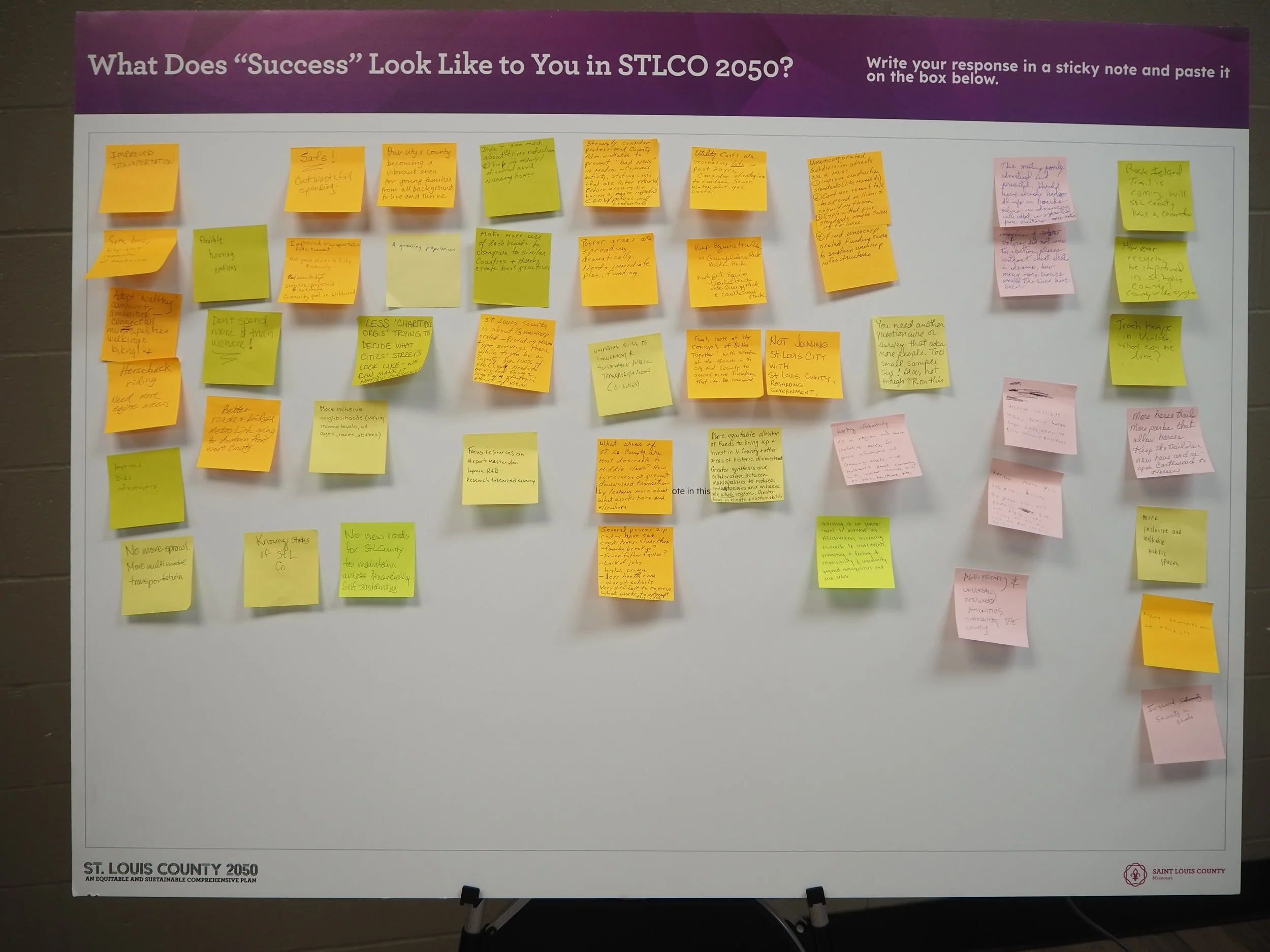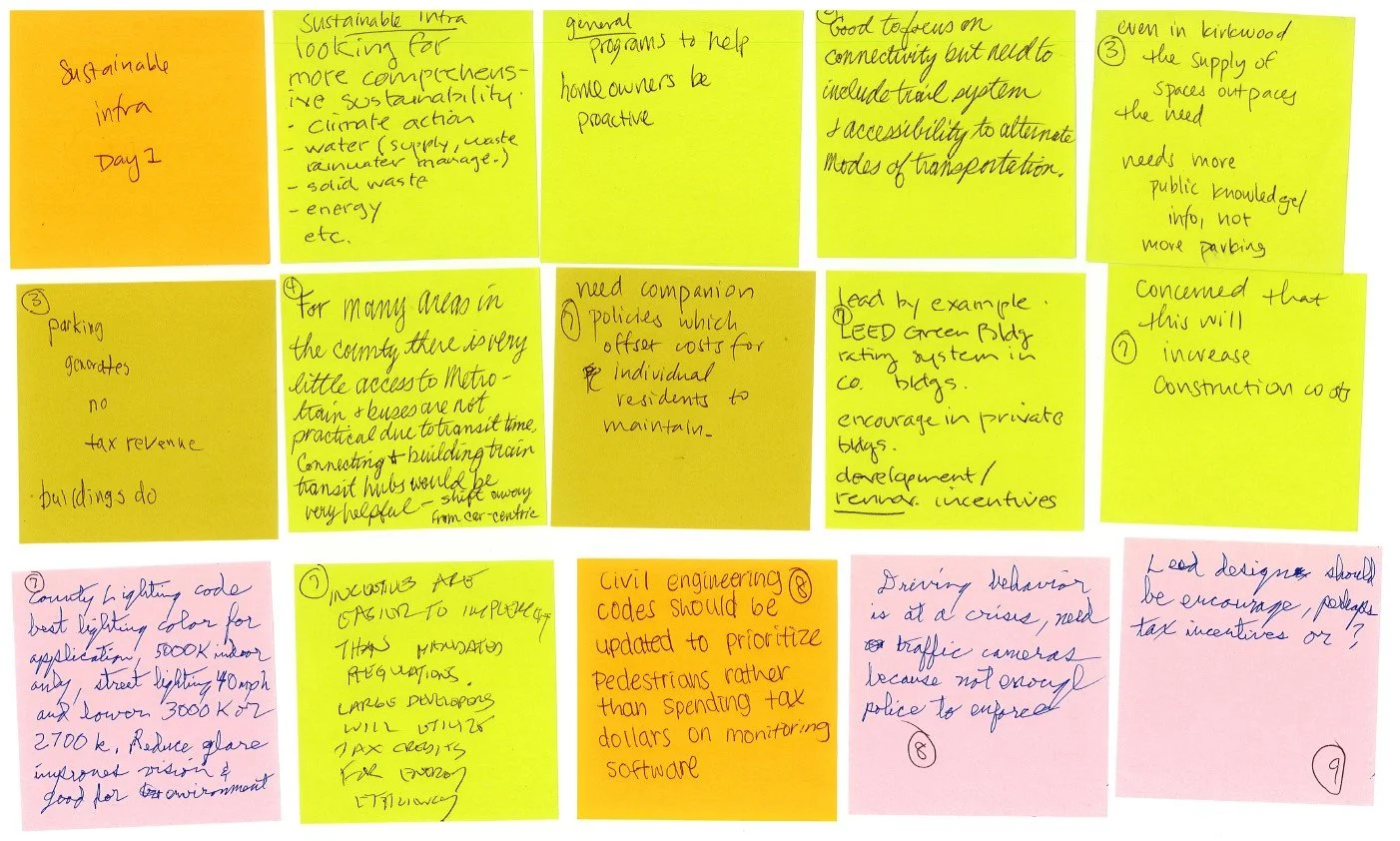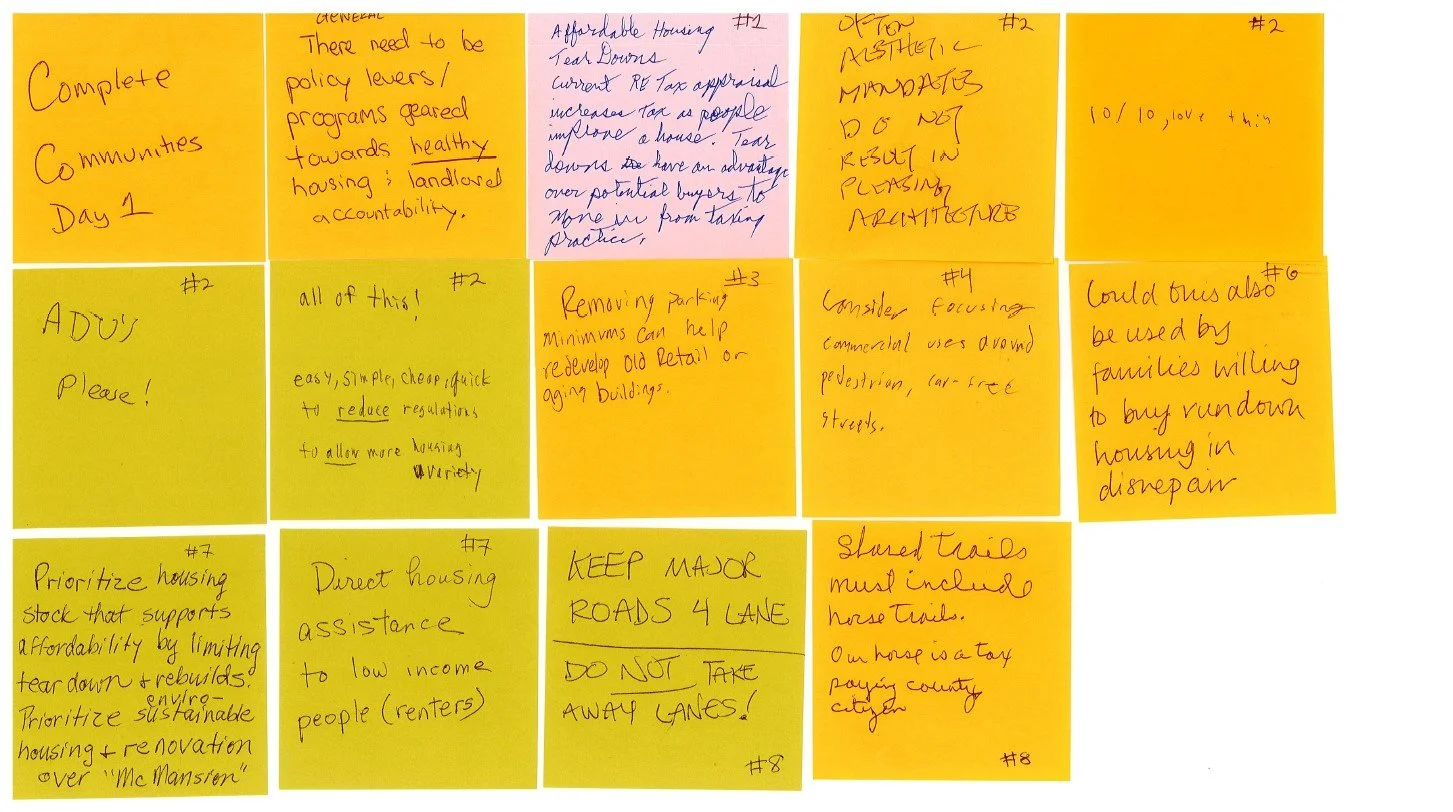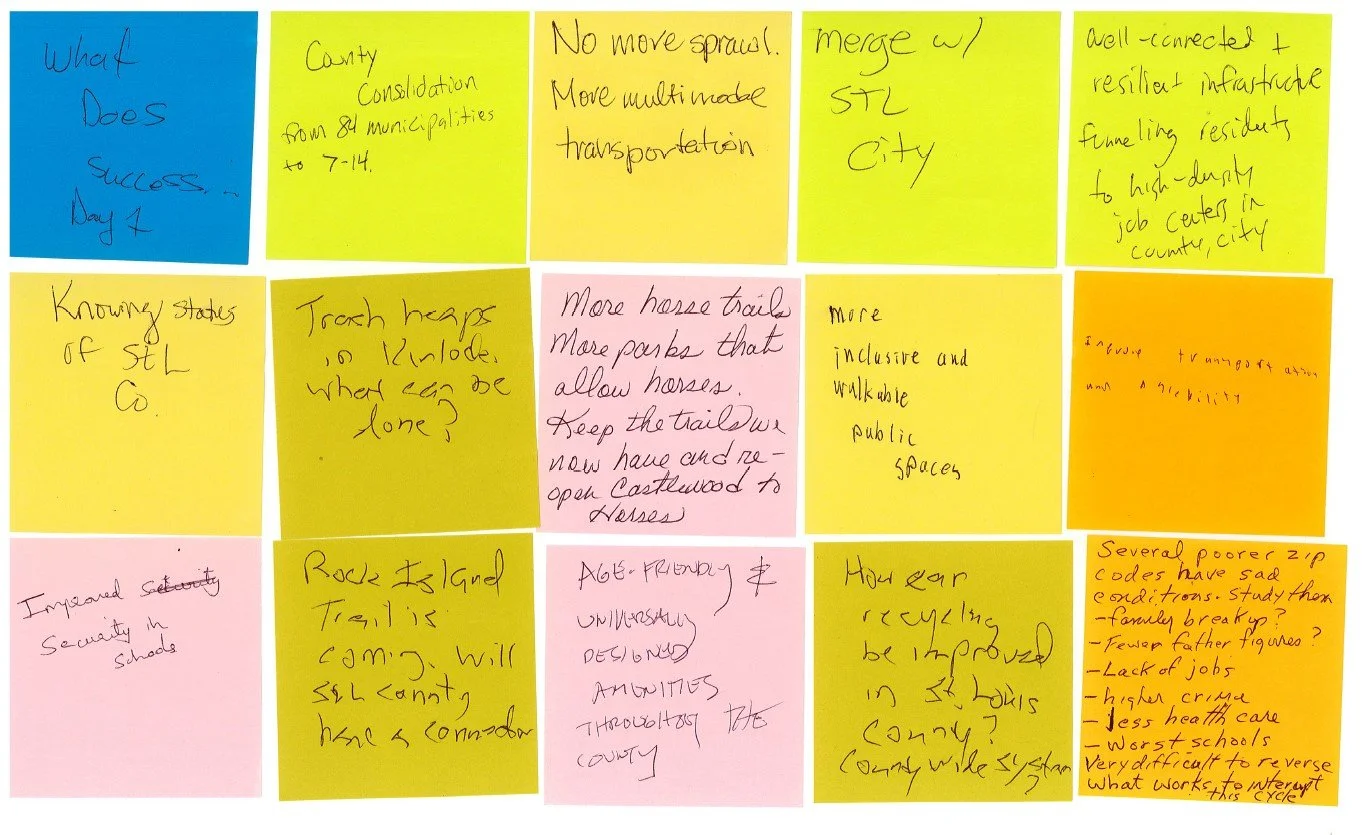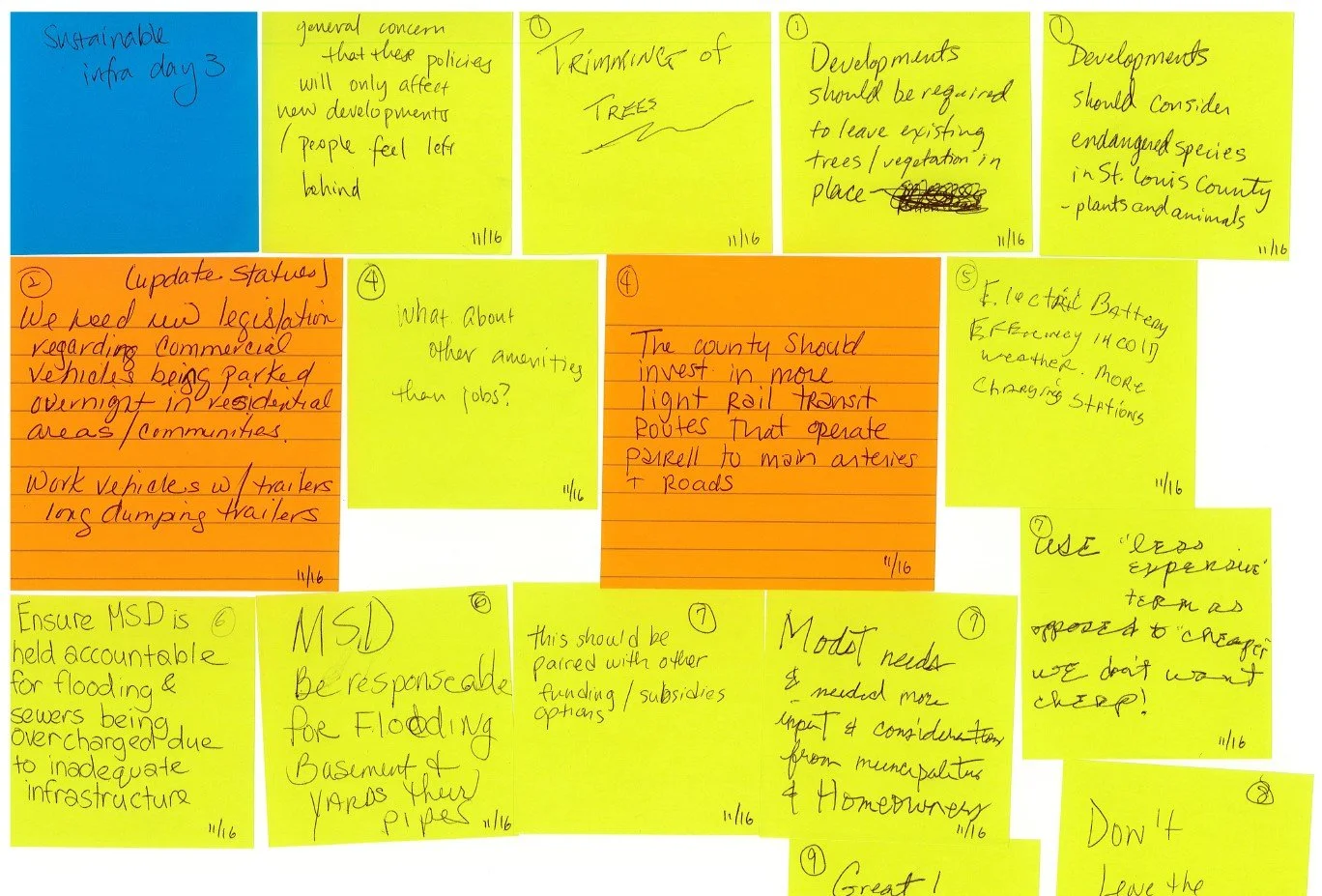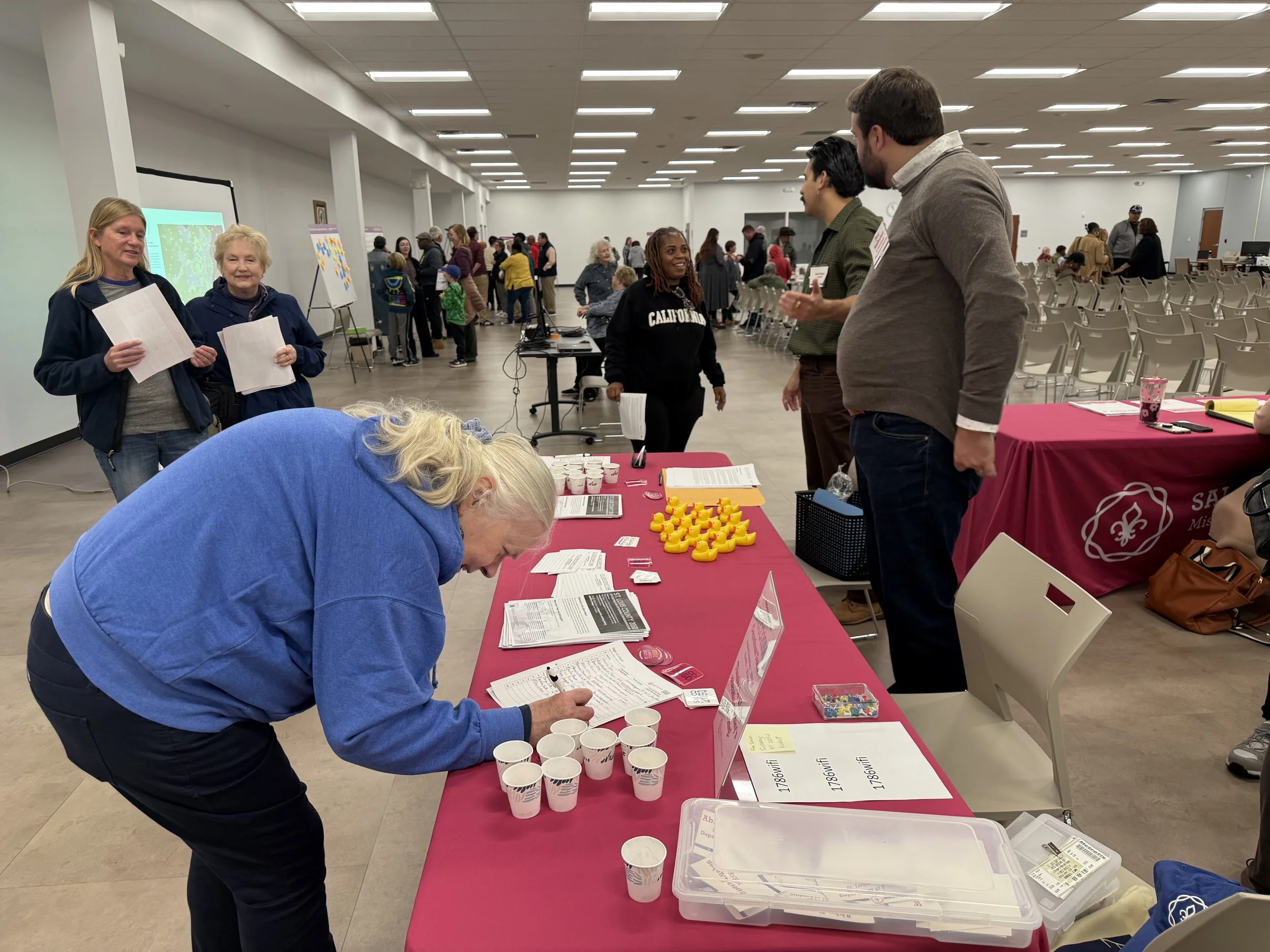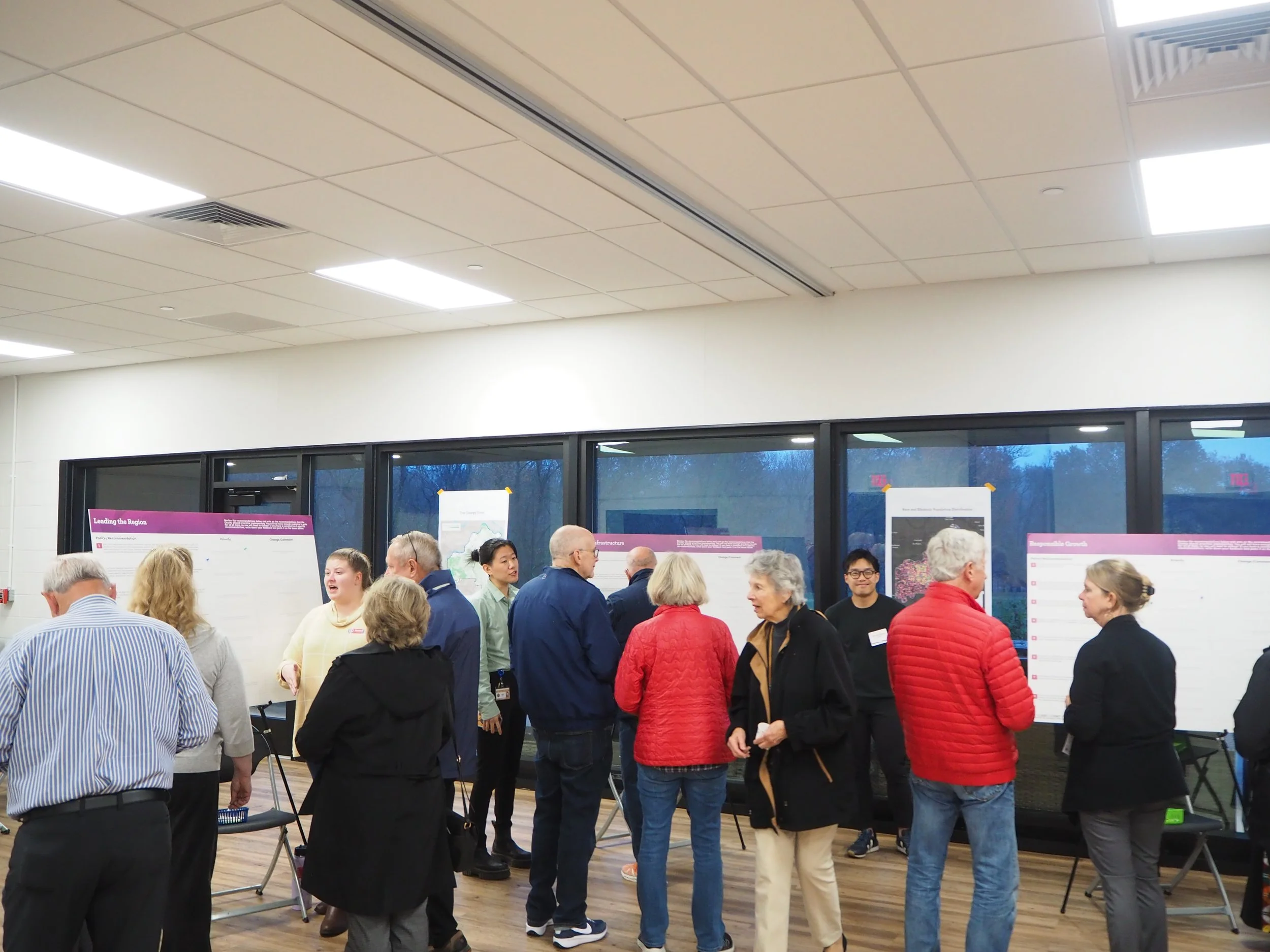
November 2024 Open House

In November 2024 the Department of Planning hosted three Open House events to update County residents about STLCO 2050’s developing policy recommendations. They were held in three locations: Greensfelder Recreation Complex in Queeny Park, The Pavilion at Lemay in Jefferson Barracks Park, and the City of Florissant Municipal Court. Over the three days, around 200 participants responded to the proposed strategies for addressing the County's most pressing challenges.
How did we collect input?
At each Open House, participants visited five stations with boards that represented STLCO 2050’s goals for the region: Complete Communities, Leading the Region, Responsible Growth, Sustainable Infrastructure, and Inclusive Economy. Each station showed seven to ten strategies developed by the project team for achieving that station's distinct goal. Participants were provided with a limited number of thumb tacks to press into the boards, emphasizing support for specific policy proposals. In addition to the thumb tacks, participants wrote responses to the strategic recommendations on sticky notes and placed those on the boards, offering suggestions or questions to help the team finetune the Plan’s drafted policies.
The Open House also featured a separate board that asked participants to describe what “success” would like for St. Louis County in 2050. In response to the open-ended question, participants recorded their ideas and placed those on the board. By the end of each event, the board was covered in sticky notes, collectively demonstrating an optimistic vision for the County’s future

Similarities and Key Themes
Many of the proposed policies resonated with attendees across all three days of the Open Houses. This outcome mirrors our findings from previous historic research efforts, surveys, and outreach events conducted during early 2024. For more information, please click here for the Existing Conditions Report and here for Community Input from 2024.
Attainable Housing and Maintenance
Respondents were overwhelmingly in favor of County programs to address the difficulties of attaining and maintaining homeownership, an integral component of building wealth and financial stability. Relatedly, the team received many comments cautioning against broad implementation of stricter code enforcement and design requirements without companion policies to offset the costs of such upgrades. For example, a policy proposing the inclusion of an energy efficiency requirement within the building code received mixed response, because the up-front cost of such projects would increase, disproportionately burdening homeowners. As the cost of housing, utilities, and maintenance increase, homeownership becomes increasingly out of reach for both new homebuyers and long-term owners. Thus, establishment of different funding structures for expanding homeownership opportunities were prioritized, including:
• Housing co-operatives which draw on grants, tax credits, and other incentives.
• Programs to subsidize home repair and other maintenance and utility costs for lower-income families.
Better Connectivity and Improved Infrastructure
Attendees also supported policies that would increase investment in walking and biking paths, improve connectivity between homes and jobs, and maintain a closer working relationship with the East-West Gateway Council of Governments and the Metro St. Louis Transit Agency. Additionally, policies which promoted denser, walkable hubs were popular.
By freeing County residents from total reliance on personal automobiles, these policies could also serve to address concerns about pedestrian safety. A commonly reported metric of success across all three days, which echo previous findings from the STLCO 2050 County-Wide Survey and in-person outreach events, was safer driving and safer streets overall.
Similarly, attendees supported policies that strengthened the public infrastructure of the County, whether through road maintenance, traffic control, or improvements to the airport. Residents expressed support to continue the County’s existing partnership with MODOT to implement smart signal and traffic monitoring programs, and an increased partnership with St. Louis Lambert Airport to perform necessary upgrades and establish the region as an economic hub nationally.
Additionally, a participatory budgeting model which allows residents to help allocate funds for road improvements, park improvements, or other neighborhood initiatives was popular.
Increased Collaboration within the Region
One of the major challenges of the region as expressed by many attendees is the lack of coordination and the regional fragmentation of programs, leading to a duplication of efforts. Respondents not only favored increased collaboration with regional organizations and stakeholders, but also the municipalities within the County.
One identified policy that many residents wanted to prioritize was better coordination of land use policies across the unincorporated and incorporated parts of the County, as that would facilitate a more coherent fabric and resolve conflicting development patterns. Many of the County’s 87 municipalities have been active partners and participants in the STLCO 2050 process; their involvement is an integral part of the success of this plan.
Sustainability
Residents also expressed support for environmental aspects of development. As days get hotter and rain becomes more frequent, it becomes increasingly imperative to limit development in the floodplain and in areas prone to sinkhole formation due to water erosion. Similarly, a policy to increase tree cover and canopy was popular.
Equity
Finally, residents from all three Open House days noted that the County cannot succeed until it addresses the systemic geographic inequity. Residents throughout the County emphasized the visible disinvestment and inequality present in North County, often citing areas such as Kinloch as an area of opportunity. These areas have high rates of vacancy and disrepair, and they coincide with higher percentages of black residents. The history of racism and intentional abandonment of North County must be addressed for the County to thrive.
Of note, a popular policy amongst respondents was the creation of a County-managed program to rehabilitate, market, and redevelop parcels in neighborhoods experiencing historic disinvestment or active decline. By taking an active role in supporting the revitalization of North County, the County can flourish.

Unique for Day 3
Along with thematic similarities from the previous events, the third Open House held at the City of Florissant Municipal Court yielded unique recommendations and insights into community needs. Many attendants expressed concern about future commercial development in their area. One pronounced example was apprehension about the former Jamestown Mall site’s future. Additionally, participants at the final Open House specified lacking retail diversity and the prevalence of liquor stores as localized challenges. Feedback at the Open House aligned with response to the County-Wide Community Survey and subsequent listening sessions that residents of North County must travel far outside their community to access both basic and recreational goods and services.
Further, more participants voiced concern about lacking educational, workforce, and entertainment options for young people. Across the three Open Houses, attendants supported increased support for the St. Louis County’s aging population, but the final Open House demonstrated similar needs for young families.
Lastly, attendants of the third Open House revealed particular anxieties related to housing access and community instability. For instance, anecdotally, participants highlighted unease regarding private-equity companies purchasing and renting single-family homes in their communities. Participants at the previous open houses did not exhibit this same sentiment. Similarly, participants demonstrated increased support for policy recommendations that targeted residential vacancy and supporting subdivision trustees. The results from the final Open House highlight that while County residents share similar fundamental concerns, different communities could also benefit from targeted policy solutions to address particular challenges.
Summary
The three Open House events were major successes! The project team will adjust the Comprehensive Plan’s policy recommendations based on resident feedback. These policy recommendations will then be modeled to project impact on future social, economic, and environmental outcomes. Once the list of policy recommendations is finalized, the team will host an additional set of outreach events to showcase the ultimate policy recommendations and vision for St. Louis County’s future.
We recognize that attending in-person events is challenging and would like to take the time to thank every Open House participant. An impactful Comprehensive Plan demands the involvement of a wide array of County residents. By taking the time to engage with the planning process, residents’ desires and dreams are interwoven into the fabric of the final product.

